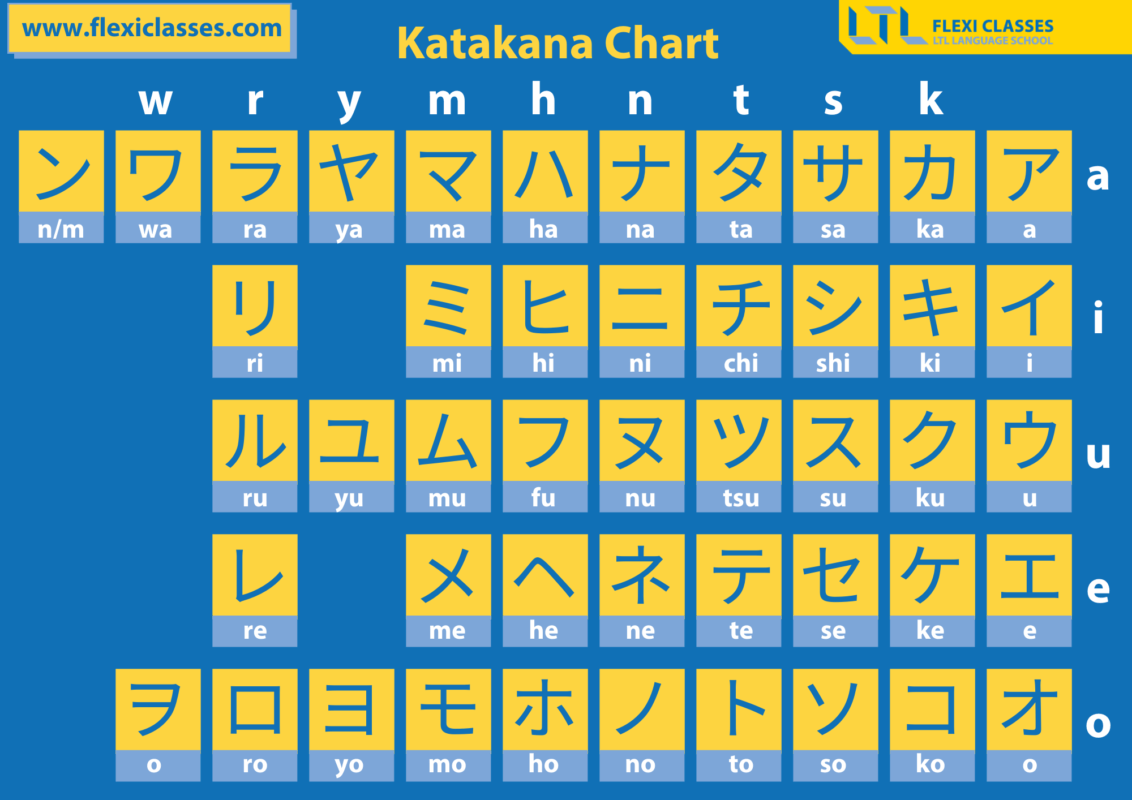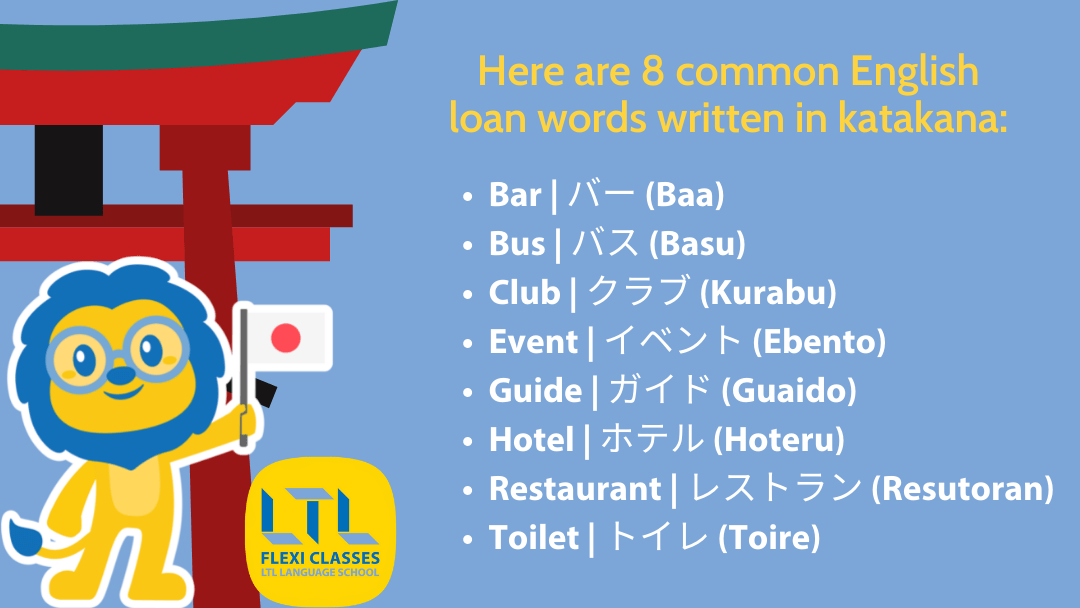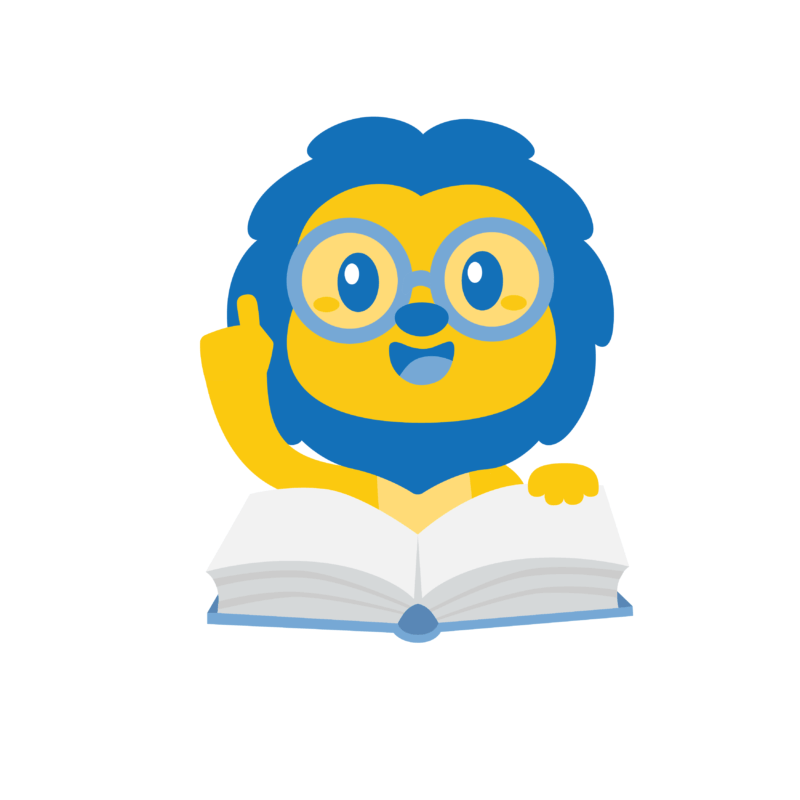A Step By Step Guide to Learning Katakana
If you thought Hiragana was easy, and have practiced all the letters, you’ll remember Katakana in no time! To make it easier, many of the Katakana syllables look quite similar to Hiragana syllables too.
Katakana syllables are characterized by short, straight strokes and sharp corners.
These Katakana syllables are used to write words borrowed from other languages.
For emphasis, to represent onomatopoeia, for technical and scientific terms, and for names of plants, animals, minerals and often Japanese companies.

These foreign words sometimes undergo their own transitions within the Japanese language, pushed, pulled, and abbreviated until they are no longer recognisable.
Each syllable in hiragana has a one-to-one relationship with katakana, and vice versa. Hiragana and katakana are simply two different ways of writing the same syllable. Hence for 46 Hiragana syllables, there are 46 Katakana syllables.
Before starting Katakana syllables, let us introduce you to chōonpu first.
Learning Katakana | What is chōonpu?
Learning Katakana | The ‘A’ Series
Learning Katakana | The ‘Ka’ Series
Learning Katakana | The ‘Sa’ Series
Learning Katakana | The ‘Ta’ Series
Learning Katakana | The ‘Na’ Series
Learning Katakana | The ‘Ha’ Series
Learning Katakana | The ‘Ma’ Series
Learning Katakana | The ‘Ya’ Series
Learning Katakana | The ‘Ra’ Series
Learning Katakana | The Last 3 Syllables
Learning Katakana | Extended Katakana
Learning Katakana | Additional Syllables
Japanese Grammar | FAQ’s
What is chōonpu?
Chōonpu is a horizontal or vertical line in the centre of the text with the width of one kanji or character. It is written horizontally in horizontal text and vertically in vertical text.
The chōonpu is usually used to indicate a long vowel sound in katakana writing, and rarely in hiragana writing.
For example:
| Katakana | Romanisation | English |
|---|---|---|
| コーヒー | kōhī | Coffee |
| ラーメン | rāmen | Japanese noodles |
Now, let’s see the Katakana syllables.
Learning Katakana – The ‘A’ Series
| Katakana | Romanisation |
|---|---|
| ア | a |
| イ | i |
| ウ | u |
| エ | e |
| オ | o |
Now, let’s practice some words containing these syllables.
| Katakana | Romanisation | English |
|---|---|---|
| アパート | apāto | Apartment |
| ナイフ | naifu | Knife |
| ウール | ūru | Wool |
| エアコン | eakon | Air conditioner |
| オレンジ | orenji | Orange |
Learning Katakana – The ‘Ka’ Series
| Katakana | Romanisation |
|---|---|
| カ | ka |
| キ | ki |
| ク | ku |
| ケ | ke |
| コ | ko |
Let’s learn some words:
| Katakana | Romanisation | English |
|---|---|---|
| カメラ | kamera | Camera |
| キーボード | kībōdo | Keyboard |
| クリスマス | kurisumasu | Christmas |
| ケーキ | kēki | Cake |
| コーヒー | kōhī | Coffee |
Learning Katakana – The ‘Sa’ Series
| Katakana | Romanisation |
|---|---|
| サ | sa |
| シ | shi |
| ス | su |
| セ | se |
| ソ | so |
Let’s learn some words:
| Katakana | Romanisation | English |
|---|---|---|
| サービス | sābisu | Service |
| シルバー | shirubā | Silver |
| スマホ | sumaho | Smartphone |
| セーター | sētā | Sweater |
| ソニー | sonī | Sony |
Learning Katakana – The ‘Ta’ Series
| Katakana | Romanisation |
|---|---|
| タ | ta |
| チ | chi |
| ツ | tsu |
| テ | te |
| ト | to |
Here are some practice words:
| Katakana | Romanisation | English |
|---|---|---|
| タクシー | takushī | Taxi |
| チキン | chikin | Chicken |
| シャツ | shyatsu | Shirt |
| テレビ | terebi | Television |
| トマト | tomato | Tomato |
Learning Katakana – The ‘Na’ Series
| Katakana | Romanisation |
|---|---|
| ナ | na |
| ニ | ni |
| ヌ | nu |
| ネ | ne |
| ノ | no |
Some words for practicing the Na series are:
| Katakana | Romanisation | English |
|---|---|---|
| バナナ | banana | Banana |
| アニメ | anime | Anime |
| スーパー | sūpā | Supermarket |
| ネットワーク | nettowāku | Network |
| ノート | nōto | Notebook |
Learning Katakana – The ‘Ha’ Series
| Katakana | Romanisation |
|---|---|
| ハ | ha |
| ヒ | hi |
| フ | fu |
| ヘ | he |
| ホ | ho |
Here are some words:
| Katakana | Romanisation | English |
|---|---|---|
| ハンカチ | hankachi | Handkerchief |
| ヒーター | hītā | Heater |
| ファイル | fairu | File |
| ヘルメット | herumetto | Helmet |
| ホテル | hoteru | Hotel |
Learning Katakana – The ‘Ma’ Series
| Katakana | Romanisation |
|---|---|
| マ | ma |
| ミ | mi |
| ム | mu |
| メ | me |
| モ | mo |
Words to practice are:
| Katakana | Romanisation | English |
|---|---|---|
| マンガ | manga | Manga |
| ミルク | miruku | Milk |
| ムービー | mūbī | Movie |
| メール | mēru | |
| モデル | moderu | Model |
Learning Katakana – The ‘Ya’ Series
| Katakana | Romanisation |
|---|---|
| ヤ | ya |
| ユ | yu |
| ヨ | yo |
Here are some words from the ‘Ya’ series:
| Katakana | Romanisation | English |
|---|---|---|
| ヤフー | yafū | Yahoo |
| ユーザー | yūzā | User |
| ヨーガ | yōga | Yoga |
Learning Katakana – The ‘Ra’ Series
| Katakana | Romanisation |
|---|---|
| ラ | ra |
| リ | ri |
| ル | ru |
| レ | re |
| ロ | ro |
Words for practice are:
| Katakana | Romanisation | English |
|---|---|---|
| マフラー | mafurā | Muffler |
| スリッパ | surippa | Slippers |
| ルール | rūru | Rule |
| チョコレート | chyokorēto | Chocolate |
| ロッカー | rokkā | Locker |
The Last Three Syllables
| Katakana | Romanisation |
|---|---|
| ワ | wa |
| ヲ | wo |
| ン | nn |
ワイン
wainn
Wine
Extended Katakana
Combinations of small versions of the five vowels i.e., ア、イ、ウ、エ and オ are known as extended katakana.
These standard katakana symbols are used to create more accurate representations of the pronunciations of words in other languages.
For example:
| Katakana | Romanisation | English |
|---|---|---|
| パーティー | pātī | Party |
| ファミリー | famirī | Family |
| フォーム | fōmu | Form |

Additional Syllables
Use of Dakuten
| GA Series | ZA Series | DA Series | BA Series |
|---|---|---|---|
| ガ ga | ザ za | ダ da | バ ba |
| ギ gi | ジ zii | ヂ ji | ビ bi |
| グ gu | ズ zu | ヅ zu | ブ bu |
| ゲ ge | ゼ ze | デ de | ベ be |
| ゴ go | ゾ zo | ド do | ボ bo |
Use of Handakuten
Handakuten converts the ハ (ha) series into パ = the Pa series.
| パ pa | ピ pi | プ pu | ペ pe | ポ po |
Use of Small Alphabet – Sokuon (促音)
The sokuon (促音) is a symbol in the form of a small hiragana or katakana tsu.
In less formal language it is called chiisai tsu (小さいつ ) or chiisana tsu (小さなつ), meaning “small tsu“. It can never appear at the beginning of the word.
ッ is used to stress the word by doubling the consonant.
For example:
| Katakana | Romanisation | English |
|---|---|---|
| サッカー | sakkā | Football / Soccer |
| サンドイッチ | sandoichchi | Sandwich |
Other Syllables – Youon (拗音)
Just like Hiragana, the youon (拗音), is a combination of a katakana ending in i, such as シ (shi), with a smaller version of one of the three y kana, ya, yu or yo.
ヤ、ユ and ヨ are often used in combination with the basic syllables キ、シ、チ、ニー、ヒ、ミ、 and リ.
For example:
| Katakana | Romanisation | English |
|---|---|---|
| シャドー | shadō | Shadow |
| ニュース | nyūsu | News |
| チョコレート | chokorēto | Chocolate |


Are you a Flexi Classes student already?
Learn more about Katakana in the following Flexi lesson:
Katakana (Intro)
Not a Flexi Student yet?
And that’s Katakana for you!
You now know another one of the 3 alphabets of the Japanese language.
If you haven’t learned about Hiragana yet, now would be a great time to do it.
And if you are confident to go a step further, here’s an introduction to Kanji.
This Japanese Grammar Bank will be updated very regularly, so make sure to come back for more lessons like this one.
Why not also come along and check out our online Japanese classes?
We teach lessons 24/7 on our online platform Flexi Classes, and all of our teachers are passionate native teachers.

FREQUENTLY ASKED QUESTIONS
What’s the difference between Katakana and Hiragana?
Hiragana is more cursive whereas the Katakana letters are more angular in shape.
This makes it really easy to differentiate between which alphabet is being used on paper or on screen.
Here are some Hiragana – おはよう (this means good morning)
Here are some Katakana – カメラ (this means camera)
See the difference?
How many alphabets in the Japanese language?
Japanese has 3 alphabets which each serve different purposes.
They are:
Hiragana
Katakana
Kanji
You can find out more about the 3 Alphabets of Japanese here.
Are Japanese Kanji and Chinese characters the same?
Japanese Kanji indeed come from Chinese characters.
Be careful though!
Not only do they not have the same pronunciation, they can also hold different meanings.
Visit this article we wrote about Kanji and Hanzi you shouldn’t confuse!
Where can I learn Katakana?
You can learn Katakana in our article right here!
Don’t forget to also check out our Top 7 Tips to Learn Katakana.
The best way to learn the Japanese alphabets, including Hiragana, would be with a native teacher.
Can all Japanese alphabets be included in one sentence?
Yes and most do in fact. Here is a very basic example:
私は(ゾイ)です。
This translates to “My name is Zoe” and includes all 3 of Hiragana, Katakana and Kanji
Can I take Japanese lessons at LTL?
Yes you can!
Check out our online Japanese classes here.
All lessons are taught by professional native teachers.








